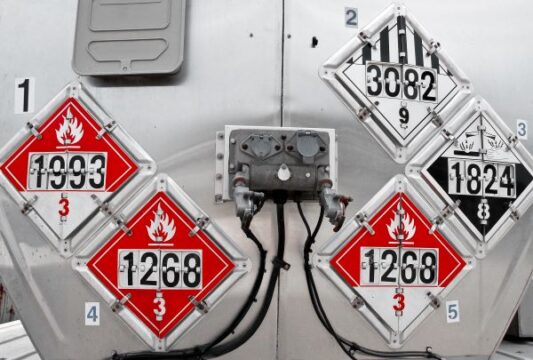
PHMSA wants you to get creative.
As Labelmaster Senior Regulatory Specialist Nikki Burgess, CDGP, DGSA, reported in the July 12 DG Digest, “The agency has posted a Broad Agency Announcement (BAA) to solicit concepts and innovative ideas for leading-edge research and techniques to advance the safe transportation of hazardous materials.”
The request specifically covered these five areas:
- Hazard Comparison of Aerosols
- De Minimis Quantities of Explosives
- Development of New Standards for Bulk and Non-Bulk Packaging
- Understanding the Hazards Posed by Dissolved Gases in Liquids
- Deregulation of Certain Types and Quantities of Hazardous Materials
PHMSA specifically did not request ideas regarding lithium batteries … but we’ll get to that later. Meanwhile, they’re looking for white papers from any responsible source—including but not limited to universities or institutions of higher education, hospitals, non-profit organizations, private individuals, corporations, and businesses or commercial organizations”—by August 24, 2021.
We spoke with Burgess about what types of research PHMSA might receive—and the kinds of submissions she would like to see.
Simplify dealing with operational requirements
Burgess says, “I’m really interested in the work being done by regulators that focuses on solving basic operational problems and simplifying compliance with them. Those are the types of issues that often drive panicked calls to the Labelmaster Hazmat Hotline, desperate for answers on a Friday afternoon.
“We get questions like, ‘Can I use an air Dangerous Goods Declaration (DGD) to ship stuff by ground?’ And the answer is, it’s not illegal. All the 49 CFR says is you have to have a shipping paper that has the right information on it. But if you have a ground shipment and use an air DGD, what will probably happen is that the freight agent will see that red-hashed form and say, ‘Wait a minute. This is an air DGD, and I don’t see the right labels on the box for an air shipment, so I have to reject it.’
“Of course, for air you have to use the form that IATA specifies, but the other two modes just say you have to use a form. So what’s happened is now operational teams have three boxes of the same identical thing, and it may be easy to say, ‘just grab the right piece of paper,’ but we don’t have 150 other people demanding our time and a whole giant dock full of stuff that is trying to go out.
“Why are there all these different forms? Why can’t there just be one?”
Specific suggestions for new Dangerous Goods regulatory research
Burgess has specific suggestions in three of the areas where PHMSA has requested new research. They align with her suggestion above that uniformity for operations personnel would make compliance simpler.
On the topic of Hazard Comparison of Aerosols:
“I’d like to see a more uniform standard for containers, because at present the very wide-ranging set of specifications that appear in the regulations are very difficult for the average shipper to understand.”
On Development of New Standards for Bulk and Non-Bulk Packaging:
“I’d like to see research that would develop a uniform set of standards supporting the inspection of used packaging in terms of what does and does not constitute acceptability for reuse.”
On Deregulation of Certain Types and Quantities of Hazardous Materials:
“I’d like to see more focus on articles and equipment containing Dangerous Goods and what really constitutes a hazard in relation to those. I think right now we are heading towards a more restrictive regulatory environment in regard to that sector than may actually be necessary given the theoretical risk levels.”
What about lithium batteries?
Why isn’t PHMSA looking for ideas to improve the safe transport of lithium batteries? That’s the topic that tends to dominate every Dangerous Goods Symposium, after all.
“Lithium batteries tend to suck the oxygen out of the room because there are so many users,” says Burgess. “Perhaps PHMSA is just sort of saying, ‘Well, look, we know everybody talks about batteries all the time, but maybe there are other issues out there that we’re not thinking about as much as we should be.’
“People do call the hotline about other things, and you know they have issues and problems that are just as important.”
Don’t miss the Dangerous Goods event of the year—sign up now for the 2021 Dangerous Goods Symposium!
Make sure your shipments are safe and in complete compliance with a full line of solutions from Labelmaster—a full-service provider of goods and services for hazardous materials and Dangerous Goods professionals, shippers, transport operators and EH&S providers.


